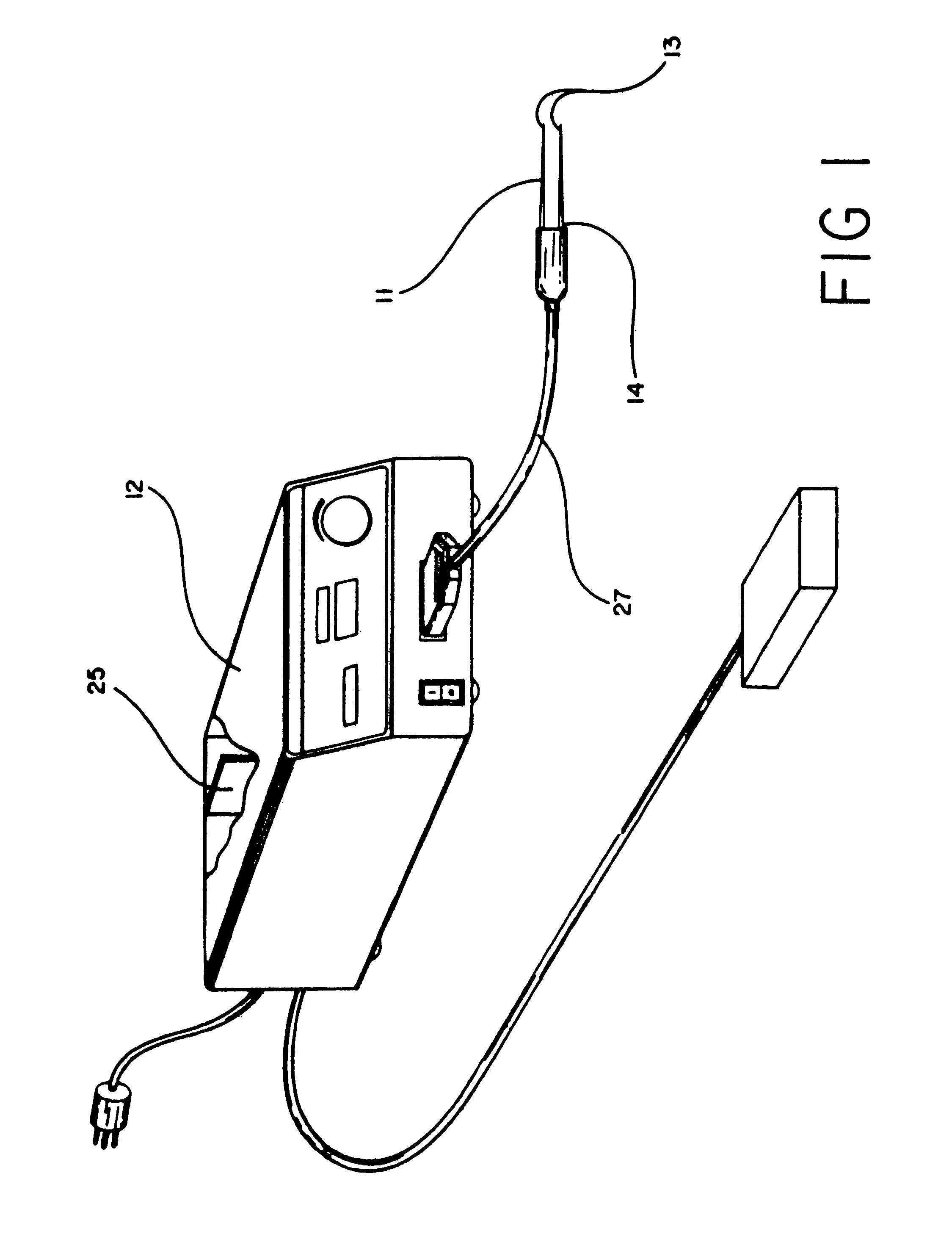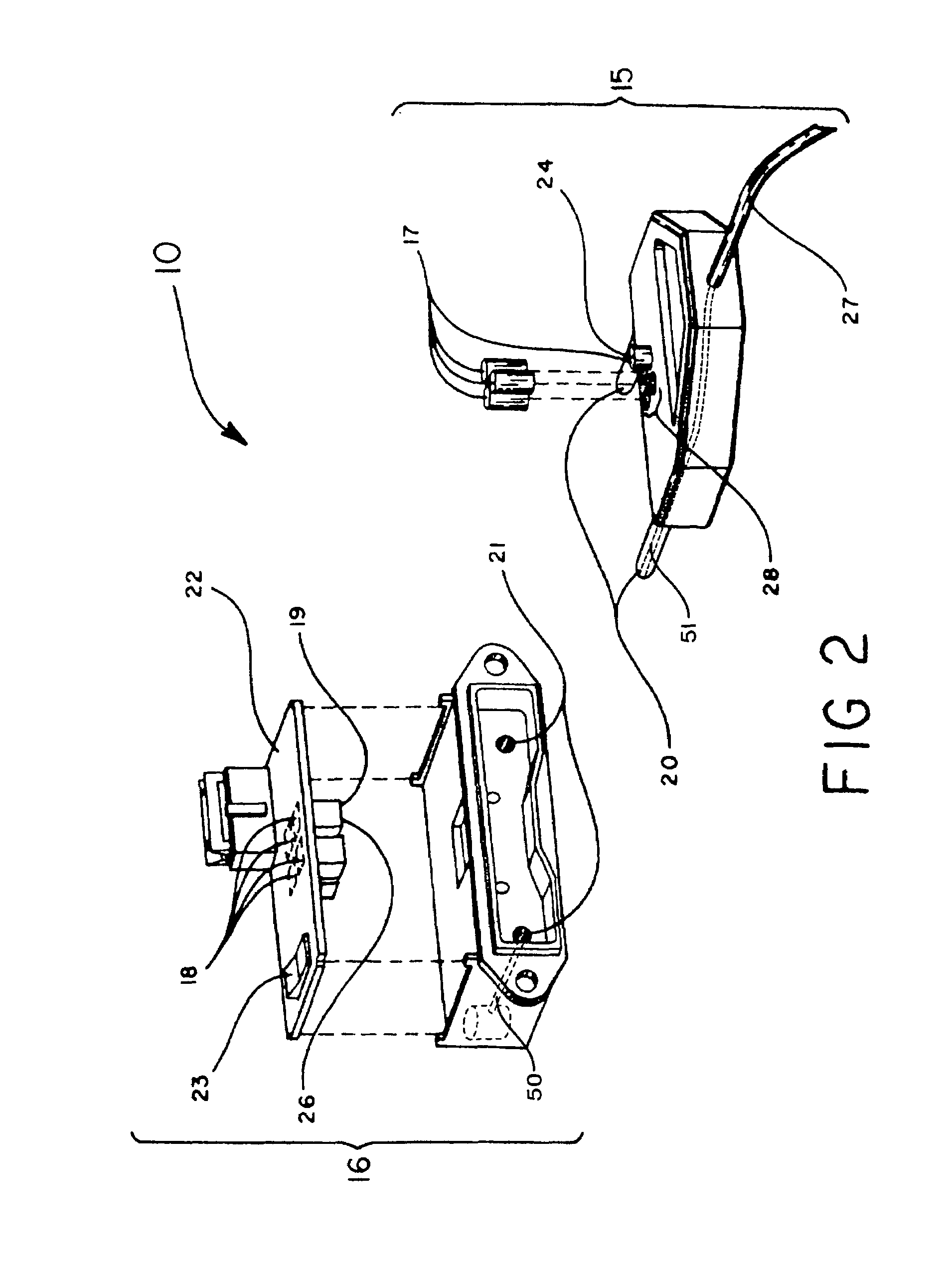Smart recognition apparatus and method
a recognition apparatus and smart technology, applied in the field of smart recognition system, can solve the problems of mismatching an electrosurgical generator and the instrument, increasing patient risk, and affecting the safety of patients, so as to prevent misapplication of rf energy to the patient, reduce the risk of patient injury, and improve safety
- Summary
- Abstract
- Description
- Claims
- Application Information
AI Technical Summary
Benefits of technology
Problems solved by technology
Method used
Image
Examples
Embodiment Construction
[0018]A qualifying connection 10 is disposed between an instrument 11 and a source of medical 12 treatment for passage of treatment energy from the source of medical treatment 12 through the qualifying connection 10 to the instrument 11 and to a patient. The qualifying connection 10 selectively permits passage of information from the instrument 11 to the source of medical treatment 12 in FIGS. 1 and 2. The qualifying connection 10 includes the instrument 11 having a distal end 13 for treatment of the patient and a proximal end 14 for manipulation by a surgeon. The instrument 11 is connected to the qualifying connection 10. The source of medical treatment 12 provides energy delivery to the instrument 11. The source of medical treatment 12 is attached to the qualifying connection 10. A first part 15 of the qualifying connection 10 connects to the instrument 11 in FIG. 2. A second part 16 of the qualifying connection 10 is carried on and connected to the source of medical treatment 12....
PUM
 Login to View More
Login to View More Abstract
Description
Claims
Application Information
 Login to View More
Login to View More - R&D
- Intellectual Property
- Life Sciences
- Materials
- Tech Scout
- Unparalleled Data Quality
- Higher Quality Content
- 60% Fewer Hallucinations
Browse by: Latest US Patents, China's latest patents, Technical Efficacy Thesaurus, Application Domain, Technology Topic, Popular Technical Reports.
© 2025 PatSnap. All rights reserved.Legal|Privacy policy|Modern Slavery Act Transparency Statement|Sitemap|About US| Contact US: help@patsnap.com



